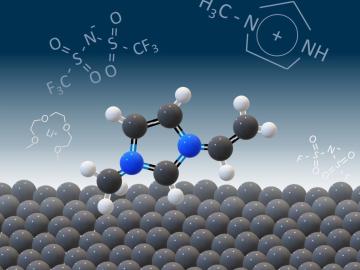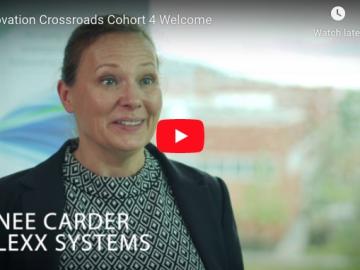
Filter News
Area of Research
- Advanced Manufacturing (1)
- Biological Systems (1)
- Biology and Environment (55)
- Biology and Soft Matter (1)
- Computational Biology (2)
- Computational Engineering (2)
- Computer Science (3)
- Energy Science (117)
- Energy Sciences (1)
- Fusion and Fission (8)
- Isotopes (27)
- Materials (64)
- Materials for Computing (6)
- Mathematics (1)
- National Security (24)
- Neutron Science (23)
- Nuclear Science and Technology (10)
- Quantum information Science (2)
- Supercomputing (32)
- Transportation Systems (1)
News Type
News Topics
- (-) Biomedical (72)
- (-) Clean Water (33)
- (-) Cybersecurity (34)
- (-) Energy Storage (112)
- (-) Isotopes (60)
- (-) Mercury (12)
- (-) Molten Salt (10)
- (-) Partnerships (68)
- 3-D Printing/Advanced Manufacturing (141)
- Advanced Reactors (38)
- Artificial Intelligence (129)
- Big Data (75)
- Bioenergy (111)
- Biology (128)
- Biotechnology (39)
- Buildings (70)
- Chemical Sciences (85)
- Composites (34)
- Computer Science (222)
- Coronavirus (48)
- Critical Materials (29)
- Education (5)
- Element Discovery (1)
- Emergency (4)
- Environment (210)
- Exascale Computing (65)
- Fossil Energy (8)
- Frontier (62)
- Fusion (65)
- Grid (72)
- High-Performance Computing (126)
- Hydropower (12)
- Irradiation (2)
- ITER (9)
- Machine Learning (67)
- Materials (149)
- Materials Science (154)
- Mathematics (12)
- Microelectronics (4)
- Microscopy (55)
- Nanotechnology (62)
- National Security (84)
- Neutron Science (166)
- Nuclear Energy (118)
- Physics (69)
- Polymers (34)
- Quantum Computing (52)
- Quantum Science (90)
- Security (31)
- Simulation (63)
- Software (1)
- Space Exploration (26)
- Statistics (4)
- Summit (70)
- Transportation (97)
Media Contacts

Scientists seeking ways to improve a battery’s ability to hold a charge longer, using advanced materials that are safe, stable and efficient, have determined that the materials themselves are only part of the solution.

After its long journey to Mars beginning this summer, NASA’s Perseverance rover will be powered across the planet’s surface in part by plutonium produced at the Department of Energy’s Oak Ridge National Laboratory.

A team led by Dan Jacobson of Oak Ridge National Laboratory used the Summit supercomputer at ORNL to analyze genes from cells in the lung fluid of nine COVID-19 patients compared with 40 control patients.

From materials science and earth system modeling to quantum information science and cybersecurity, experts in many fields run simulations and conduct experiments to collect the abundance of data necessary for scientific progress.

Oak Ridge National Laboratory scientists seeking the source of charge loss in lithium-ion batteries demonstrated that coupling a thin-film cathode with a solid electrolyte is a rapid way to determine the root cause.

Ada Sedova’s journey to Oak Ridge National Laboratory has taken her on the path from pre-med studies in college to an accelerated graduate career in mathematics and biophysics and now to the intersection of computational science and biology

A team of researchers has performed the first room-temperature X-ray measurements on the SARS-CoV-2 main protease — the enzyme that enables the virus to reproduce.

ORNL welcomed six technology innovators to join the fourth cohort of Innovation Crossroads, the Southeast’s only entrepreneurial research and development program based at a U.S. Department of Energy national laboratory.

Oak Ridge National Laboratory researchers have discovered a better way to separate actinium-227, a rare isotope essential for an FDA-approved cancer treatment.

With the rise of the global pandemic, Omar Demerdash, a Liane B. Russell Distinguished Staff Fellow at ORNL since 2018, has become laser-focused on potential avenues to COVID-19 therapies.


